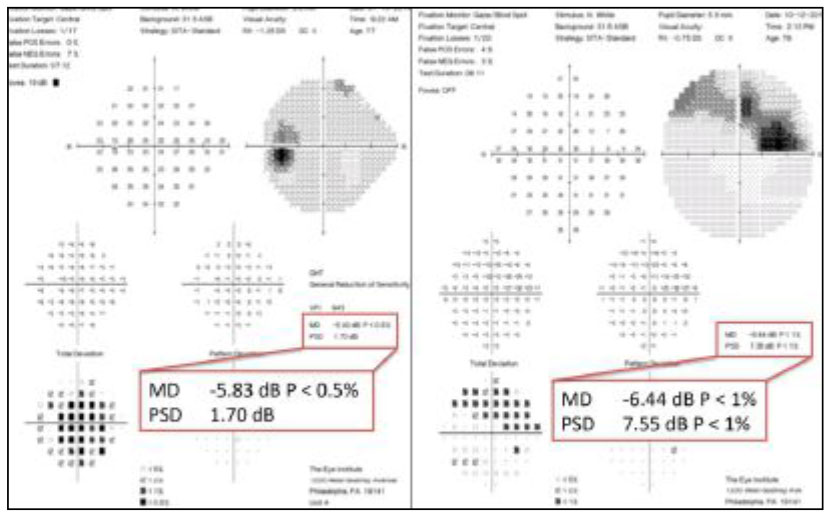 |
| 10-2 remains one of the most effective and important tests to evaluate visual field. Click image to enlarge. |
“The 10-2 may be more useful in comprehensively characterizing the defect and predicting central visual function,” said Jack Phu, BOptom (Hons), MPH, PhD, of the University of New South Wales. He concluded that a “flatter” gradient of change between neighboring points found in the 24-2 using a step-based approach highlights opportunities for monitoring glaucoma progression when using a 10-2 to identify deepening and widening of the scotoma.
The study used a novel step-based approach to quantitatively examine clinically-meaningful differences between the two visual field grids in 73 patients with central visual field defects.
“Pattern deviation values were extracted to obtain the corrected defect depth, and using these data, we calculated the number of meaningful steps to the visual field measurement floor (defined as -22dB),” Dr. Phu noted. “We compared three parameters between grids: 1) magnitude of the deepest defect, 2) difference in defect between its neighboring point and 3) number of steps remaining before reaching the measurement floor.”
The magnitude of the deepest defect was similar between grids across all meridians, and the difference in defect (dB/test location) between neighboring points was also similar between grids.
“This meant that the 24-2 had an effectively flatter “gradient” (dB/degree), as it has 6º point spacing, in comparison with the 2º point spacing of the 10-2,” Dr. Phu said. “This implies that there is information missing from the visual field.”
The study also found that there were proportionally fewer instances where the measurement floor was reached and a greater number of steps remained when using the 10-2 compared with the 24-2.
“The greater test point density on the 10-2 (10º test) provides more opportunities for characterizing central visual field defects over time, Dr. Phu concluded. “As glaucoma progresses, the importance of the 10-2 for monitoring change becomes more apparent.”
Phu J, Kalloniatis M. The 10-2 provides more information for tracking visual field progression in central visual field effects compared to the 24-2. AAO Meeting 2021. |











